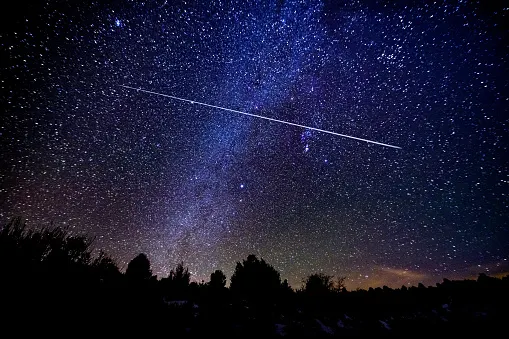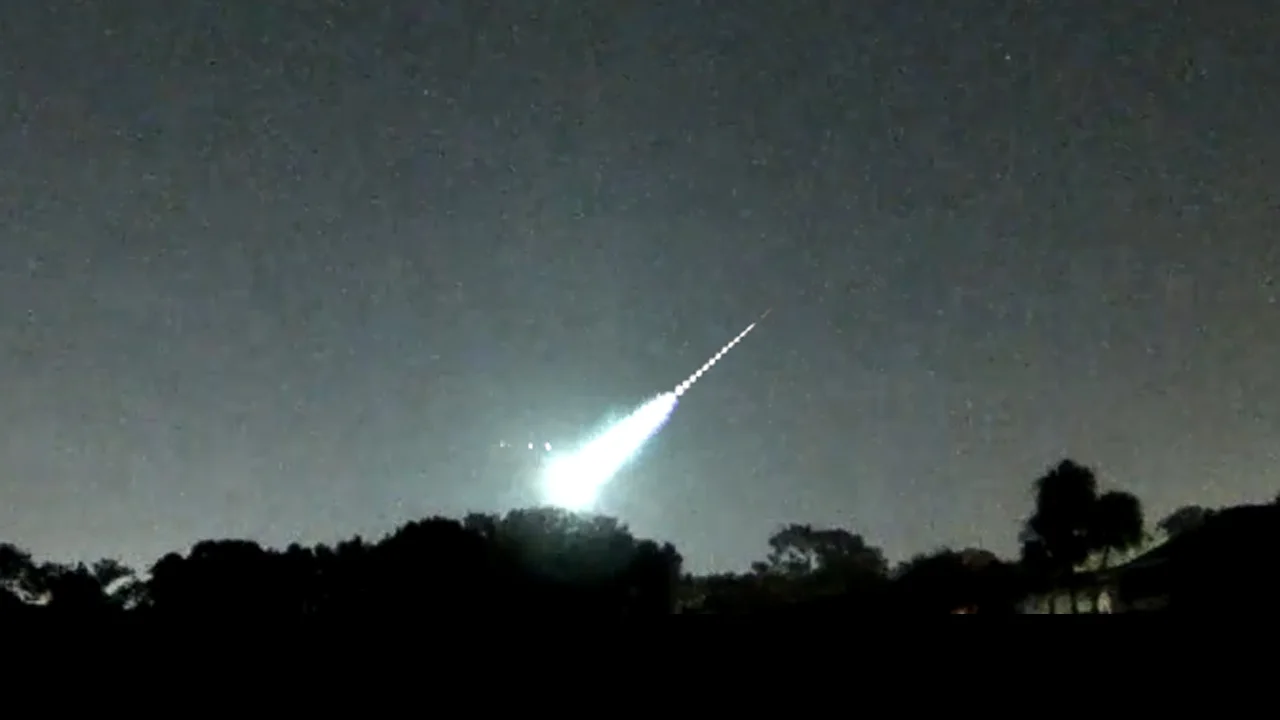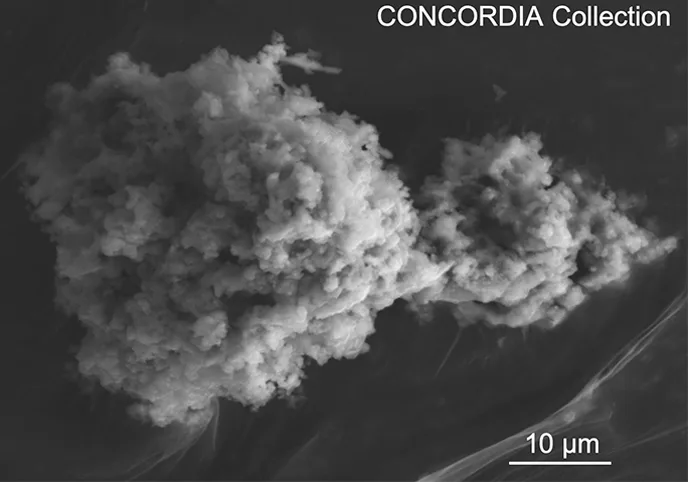
Over 5,000 metric tons of extraterrestrial dust rains down on Earth yearly
Digging through Antarctic snow, scientists have uncovered just how much space dust our planet sweeps up.
Earth is under constant bombardment from extraterrestrial dust. A new study estimates that thousands of metric tons of it rain down on us every year.
Earlier this week, we witnessed a dramatic example of what happens when a piece of interplanetary debris intercepts Earth's path around the Sun. A small meteoroid, a little over half a metre wide, blazed through the night sky over Florida before exploding in a bright flash of light.

This image combines 30 frames from a video shot on the night of April 12, 2021, from Lakeland, FL, just to the southwest of Orlando. It captures the entire path of the fireball that flashed over the area, from beginning to just before it filled the horizon with light as it exploded. Video credit: Joseph Gresham
NASA estimates that up to 44 metric tons of meteoritic material is swept up by our planet each day. The meteoroids big enough to cause these 'fireball' events are relatively rare, though. The vast majority of this material is made up of tiny specks of extraterrestrial dust, left behind by comets and asteroids, or even ejected from other planets.
Some of these dust particles vaporize as they hit the atmosphere, showing up as brief streaks of light. Some end up floating around in the upper atmosphere, contributing to the formation of eerie-looking noctilucent clouds. The rest of this interplanetary dust reaches the ground as micrometeorites, but exactly how much does that amount to?

Snow containing micrometeorites is gathered from near Concordia Station, on Dome C, in the central Antarctica, in 2002. Credit: Jean Duprat/Cécile Engrand/CNRS Photothèque
To answer this question, Jean Duprat, a researcher with the French National Centre for Scientific Research (CNRS), has been gathering teams of scientists at Concordia Station, deep in the frozen expanse of East Antarctica, for the past 20 years. With virtually no terrestrial dust and very little snowfall, this was the perfect location to gather these micrometeorites and get a sense of exactly how much extraterrestrial dust reaches the surface.
During six different expeditions over the past two decades, Duprat and his colleagues dug into the ultra-clean snow near Concordia Station, collecting samples to bring back to their labs. From these samples, they found a total of 2,088 micrometeorites, split between 808 cosmic spherules — micrometeorites that become melted as they pass through the atmosphere — and 1,280 unmelted micrometeorites.

An electron microscope image of an unmelted micrometeorite, about 65 microns across, extracted from an Antarctic snow sample at Concordia Station, Dome C. Samples gathered ranged from 30 to 350 microns in size. Credit: Cécile Engrand/Jean Duprat
By applying their findings from Concordia Station to the entire surface of Earth, the researchers estimate that an average of 5,200 metric tons of space dust reaches the surface each year.
Based on their study, they found that around 80 per cent of this dust originates from short-period 'Jupiter-family' comets, with the rest coming from asteroids.
"This is valuable information," a CNRS press release reported on April 8, "to better understand the role played by these interplanetary dust particles in supplying water and carbonaceous molecules on the young Earth."










